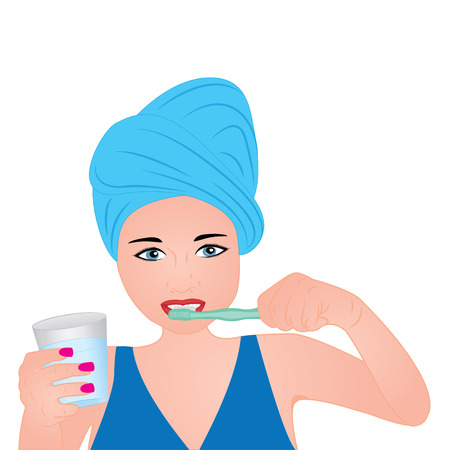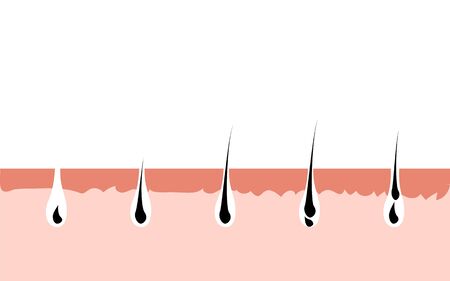1. Understanding the Basics of At-Home Waxing
Waxing at home can be a game-changer for smooth, hair-free skin, but understanding the basics is essential to get the best results. From choosing the right type of wax to knowing how it works, lets break down everything you need to know before you start waxing.
Types of Wax for At-Home Use
Not all waxes are created equal! There are different types available, each with its own benefits and best-use scenarios. Here’s a quick comparison:
| Type of Wax | Description | Best For |
|---|---|---|
| Soft Wax (Strip Wax) | A thin layer of wax applied and removed with cloth strips. | Larger areas like legs, arms, and back. |
| Hard Wax | A thicker wax that hardens on the skin and is removed without strips. | Sensitive areas like the face, underarms, and bikini line. |
| Sugar Wax | A natural alternative made from sugar, lemon, and water. | Sensitive skin and eco-conscious users. |
How Waxing Works
The basic principle of waxing is simple: warm wax adheres to the hair and pulls it out from the root when removed. This process leaves your skin smoother for longer compared to shaving. Since waxing removes hair from the root, it also weakens hair follicles over time, leading to finer regrowth.
The Hair Growth Cycle and Why It Matters
Your hair grows in cycles, and waxing works best when hair is in the anagen (growth) phase. If you wax too soon or too late in the cycle, results may not last as long. For best results, wait until hair is about 1/4 inch (about the length of a grain of rice) before waxing again.
Selecting the Right Wax for Your Skin Type
Your skin type plays a big role in determining which wax will work best for you. Use this guide to find your ideal match:
| Skin Type | Recommended Wax Type | Why? |
|---|---|---|
| Sensitive Skin | Sugar wax or hard wax | Milder formulas reduce irritation. |
| Oily Skin | Soft wax with pre-wax cleanser | Cleansing first helps remove excess oil for better adhesion. |
| Dry Skin | Sugar wax or moisturizing hard wax | Nourishing ingredients prevent excessive dryness. |
| Normal Skin | You can use any type! | Your skin can tolerate most formulas well. |
Final Preparations Before You Start Waxing
A successful at-home waxing session starts with proper prep:
- Cleansing: Wash your skin thoroughly to remove oils, lotions, or sweat.
- Patching: Test a small amount of wax on your skin to check for reactions.
- Pain Management: Exfoliate a day before waxing and avoid caffeine beforehand to reduce sensitivity.
- Troubleshooting:If youre new to waxing, start with less sensitive areas like your legs before moving on to delicate spots like your face or bikini line.
Now that you understand the basics of at-home waxing, youre ready to move on to mastering the proper techniques for a smooth and effective experience!
2. Preparation: Setting Yourself Up for Success
Before you start waxing, proper preparation is key to achieving smooth and long-lasting results. Taking the time to prep your skin and gather the right tools will help minimize discomfort and ensure an effective waxing session. Follow these essential pre-waxing steps to set yourself up for success.
Exfoliate Your Skin
Exfoliation is a crucial step that helps remove dead skin cells and prevents ingrown hairs. It also allows the wax to adhere better to the hair rather than the skin, making the process more effective.
Best Exfoliation Methods:
| Method | Description |
|---|---|
| Dry Brushing | A gentle brush with natural bristles can help remove dead skin and improve circulation. |
| Sugar Scrub | A homemade or store-bought sugar scrub exfoliates while moisturizing the skin. |
| Exfoliating Gloves | A simple yet effective way to slough off dead skin in the shower. |
| Chemical Exfoliants | AHA or BHA-based exfoliants can help with deeper exfoliation but should be used cautiously before waxing. |
Selecting the Right Waxing Tools
The right tools can make all the difference when it comes to at-home waxing. Here’s what you’ll need:
- Wax Type: Choose between soft wax (used with strips) or hard wax (applied directly and removed without strips).
- A Wax Warmer: Ensures consistent temperature control for a smoother application.
- Popsicle Sticks or Spatulas: Helps apply wax evenly without mess.
- Cotton Strips (if using soft wax): Needed for removing wax from the skin efficiently.
- Tweezers: For touching up any missed hairs after waxing.
- Mild Cleanser: To clean the skin before waxing and remove excess oils.
- Aloe Vera or Soothing Lotion: Helps calm the skin post-waxing.
Cleansing and Prepping Your Skin
Your skin should be clean, dry, and free of lotions or oils before applying wax. Follow these simple steps:
- Cleansing: Wash the area with a mild, fragrance-free cleanser to remove dirt and oils.
- Drying Thoroughly: Make sure your skin is completely dry, as moisture can prevent the wax from adhering properly.
- Powder (Optional): A light dusting of baby powder can absorb any remaining moisture, especially in humid conditions.
Pain Management Tips
If youre concerned about discomfort during waxing, try these tips to reduce pain:
- Pain Reliever: Taking an over-the-counter pain reliever 30 minutes before waxing may help minimize discomfort.
- Numbing Cream: Some people find that numbing creams designed for waxing can ease sensitivity.
- Avoid Caffeine & Alcohol: These can make your skin more sensitive, so its best to avoid them before waxing.
- Breathe & Relax: Tension can make waxing more painful—take deep breaths and stay relaxed throughout the process.
Taking these preparatory steps will ensure a smoother, more efficient at-home waxing experience. Once your skin is properly prepped and you have all your tools ready, you’re set to move on to the actual waxing process!

3. Step-by-Step Waxing Techniques
Getting smooth, hair-free skin at home requires the right technique. Follow these step-by-step instructions to ensure the best results while minimizing discomfort and irritation.
Step 1: Prep Your Skin
Proper preparation is key to a successful waxing session. Here’s what you need to do before applying wax:
- Clean the area: Wash your skin with mild soap and water to remove oils, dirt, and lotions.
- Exfoliate gently: Use a scrub or exfoliating mitt to prevent ingrown hairs.
- Make sure your hair is the right length: Hair should be about 1/4 inch (6mm) long for optimal waxing.
- Apply a light dusting of powder: This helps absorb excess moisture and allows the wax to grip better.
Step 2: Apply the Wax
The application method depends on whether you’re using soft wax (requires strips) or hard wax (peels off without strips).
| Wax Type | Application Method |
|---|---|
| Soft Wax | Use an applicator stick to spread a thin layer in the direction of hair growth. |
| Hard Wax | Apply a thicker layer and wait for it to harden slightly before removal. |
Step 3: Remove the Wax
- If using soft wax: Place a waxing strip over the applied wax, press firmly, then pull it off quickly against the direction of hair growth.
- If using hard wax: Once it’s set but still flexible, lift one edge and quickly pull it off in one swift motion against hair growth.
- Tighten your skin: Hold the surrounding skin taut with one hand while pulling with the other to reduce pain.
Step 4: Post-Wax Care
Avoid irritation by following these aftercare steps:
- Soothe your skin: Apply aloe vera gel or fragrance-free lotion to calm redness.
- Avoid heat and sweat: Stay away from hot showers, saunas, and workouts for at least 24 hours.
- No tight clothing: Wear loose-fitting clothes to prevent friction and irritation.
- No touching or scratching: Let your skin heal naturally without added irritation.
Troubleshooting Common Issues
If you experience any of these common waxing problems, here’s how to fix them:
| Issue | Solution |
|---|---|
| Painful waxing | Numb the area with ice beforehand or take an over-the-counter pain reliever 30 minutes prior. |
| Irritation/redness | Avoid scented products and apply a cold compress immediately after waxing. |
| Wax residue left on skin | Dab some baby oil or coconut oil on a cotton pad and gently wipe away excess wax. |
| Bumps or ingrown hairs | Exfoliate regularly and use an antibacterial toner to keep pores clear. |
Nailing down your waxing technique takes practice, but following these steps will help you achieve silky-smooth skin with minimal discomfort. Stay consistent with proper aftercare, and you’ll notice longer-lasting results!
4. Post-Wax Care: Keeping Your Skin Smooth and Healthy
Taking care of your skin after waxing is just as important as the waxing process itself. Proper post-wax care can help reduce redness, prevent ingrown hairs, and keep your skin feeling smooth for longer. Follow these simple steps to ensure the best results.
How to Soothe Your Skin After Waxing
Your skin may feel sensitive or slightly irritated right after waxing. To calm it down, try these tips:
- Apply a cold compress: Press a cool cloth or ice pack on the waxed area to reduce swelling and redness.
- Use aloe vera gel: Aloe vera has soothing properties that help relieve irritation and hydrate the skin.
- Avoid hot showers: Stick to lukewarm water for at least 24 hours to prevent further irritation.
Preventing Ingrown Hairs
Ingrown hairs can be frustrating, but you can minimize them with proper care. Here’s how:
| Tip | Description |
|---|---|
| Exfoliate regularly | Gently exfoliate 2-3 times a week to remove dead skin cells and prevent hairs from getting trapped under the skin. |
| Moisturize daily | Keeping your skin hydrated helps soften hair regrowth and reduces the risk of ingrown hairs. |
| Avoid tight clothing | Tight clothes can cause friction, leading to irritation and ingrown hairs. Opt for loose-fitting fabrics after waxing. |
Maintaining Long-Lasting Results
If you want to enjoy smooth skin for as long as possible, follow these maintenance tips:
- Avoid touching the waxed area: Your hands carry bacteria that can cause breakouts or infections.
- Soothe with natural oils: Light oils like coconut or jojoba oil help nourish the skin without clogging pores.
- Stay consistent with waxing: Regular waxing weakens hair follicles over time, making regrowth finer and sparser.
5. Common Mistakes and How to Avoid Them
At-home waxing can be a game-changer for smooth skin, but making mistakes can lead to irritation, patchy results, or even pain. Avoid the most frequent at-home waxing errors, such as uneven application, missed spots, and improper removal techniques, to achieve salon-quality results.
Uneven Wax Application
One of the most common mistakes is applying wax too thickly or too thinly. If the wax layer is too thick, it won’t adhere properly to the hair, making removal difficult. On the other hand, if its too thin, it may not grip the hair effectively.
How to Fix It:
- Spread an even, thin layer of wax in the direction of hair growth.
- Use a spatula or applicator at a 45-degree angle for better control.
- Aim for a consistency similar to honey – not too runny or clumpy.
Missed Spots
If you notice patches of hair left behind after waxing, it’s likely due to improper application or removal. Rushing through the process often leads to missed areas.
How to Fix It:
- Work in small sections rather than trying to cover large areas at once.
- Ensure each strip fully adheres before pulling it off.
- If you miss a spot, wait a few minutes before reapplying wax to avoid skin irritation.
Poor Removal Technique
The way you remove the wax strip is just as important as how you apply it. Pulling too slowly or at the wrong angle can cause unnecessary pain and incomplete hair removal.
How to Fix It:
- Hold your skin taut with one hand while pulling with the other.
- Remove the strip in one quick motion against the direction of hair growth.
- Avoid pulling upward—keep the motion parallel to your skin.
Irritation and Redness
If your skin becomes excessively red or irritated after waxing, it could be due to sensitive skin, using wax that’s too hot, or skipping post-wax care.
How to Fix It:
- Test a small area first if you have sensitive skin.
- Let the wax cool slightly before applying it—too hot can burn your skin!
- Soothe your skin with aloe vera or a fragrance-free moisturizer after waxing.
Troubleshooting At-Home Waxing Mistakes
| Mistake | Cause | Solution |
|---|---|---|
| Uneven application | Wax applied too thickly or thinly | Aim for a honey-like consistency and spread evenly |
| Patches of missed hair | Lack of coverage in certain areas | Work in smaller sections and ensure full adhesion before removing |
| Painful removal | Pulling too slowly or incorrectly | PULL QUICKLY and keep motion parallel to skin surface |
| Irritation/redness | Sensitive skin or wax temperature too high | Cool wax slightly before use and apply post-wax soothing products |
Avoiding these common mistakes will make your at-home waxing routine much smoother (literally!). With proper technique and patience, you’ll achieve professional-level results without stepping foot in a salon.


